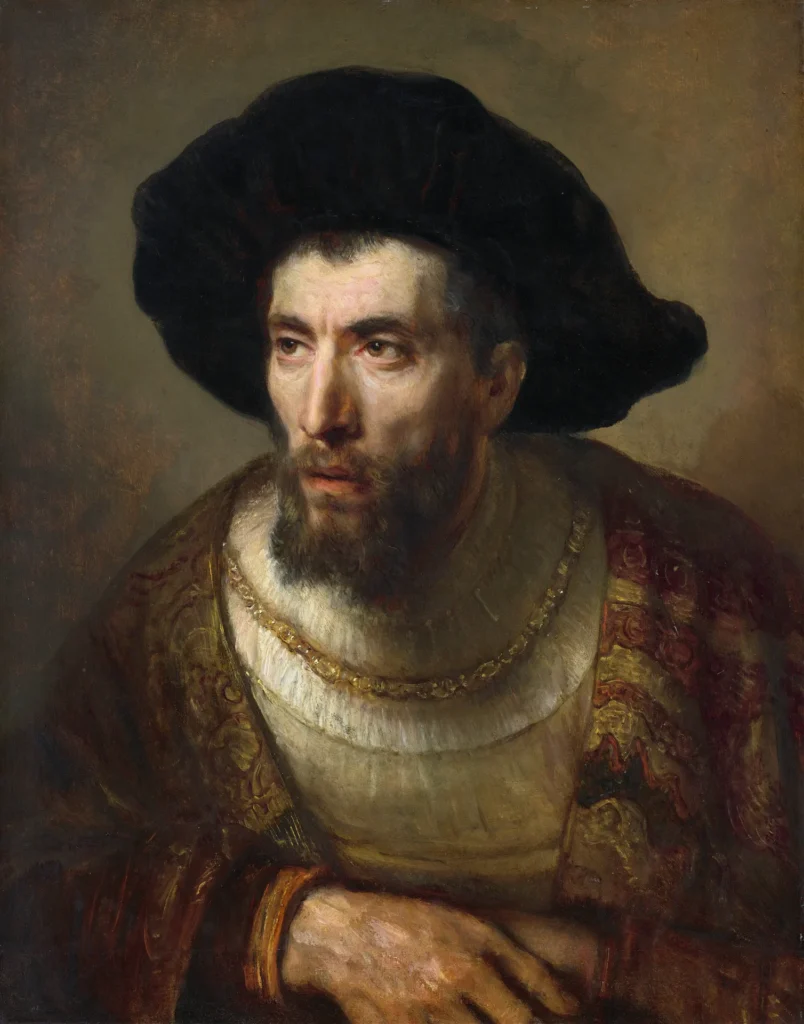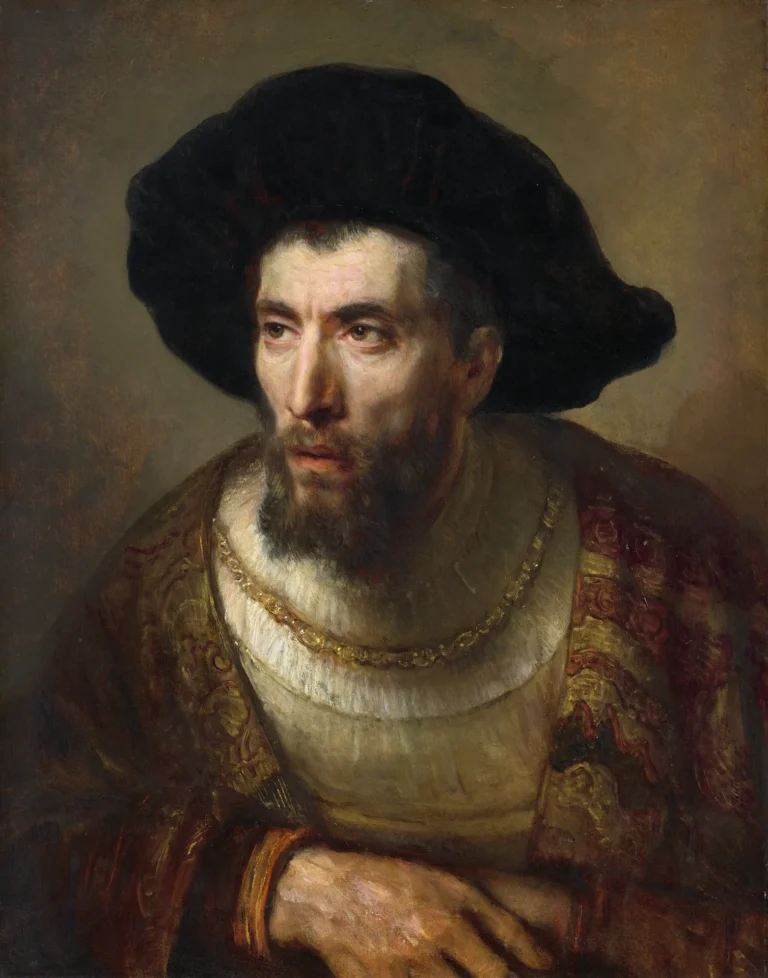Philosopher in Meditation
Created in 1632, 'Philosopher in Meditation' is a striking example of Rembrandt's Baroque style, characterized by profound use of light and shadow. The artwork features a philosopher sitting pensively near a window, while a woman attends to a fire in the background, symbolizing the contrast of intellectual contemplation and everyday tasks. The painting is noted for its depth, rich symbolism, and interpretations ranging from religious to psychological, reflecting Rembrandt's ability to capture the complexity of the human experience.
Year 1632
About the Artwork
'Philosopher in Meditation' reflects a transitional period in Rembrandt's career, moving from Leiden to Amsterdam in the early 1630s. The painting is infused with philosophical and spiritual themes, capturing a moment of deep contemplation. The prominent spiral staircase serves as a metaphor for philosophical ascent, while the juxtaposition of light from the window and fire illustrates the dual nature of human thought—its lofty aspirations contrasted with everyday life. This artwork continues to inspire wonder and scholarly debate, as viewers seek to uncover its layers of meaning and connections to religious narratives and psychological motifs.
Did You Know
The painting has been referenced in the works of notable literary figures such as George Sand and Marcel Proust, showcasing its cultural influence beyond the art world.
The spiral staircase in the painting symbolizes the journey of thought and enlightenment, serving as a central motif that adds layers of meaning to the introspective theme.
Some art historians suggest that the main figure may represent a portrayal of Rembrandt’s father, Harman Gerritsz van Rijn, adding a personal dimension to the artwork’s narrative.










